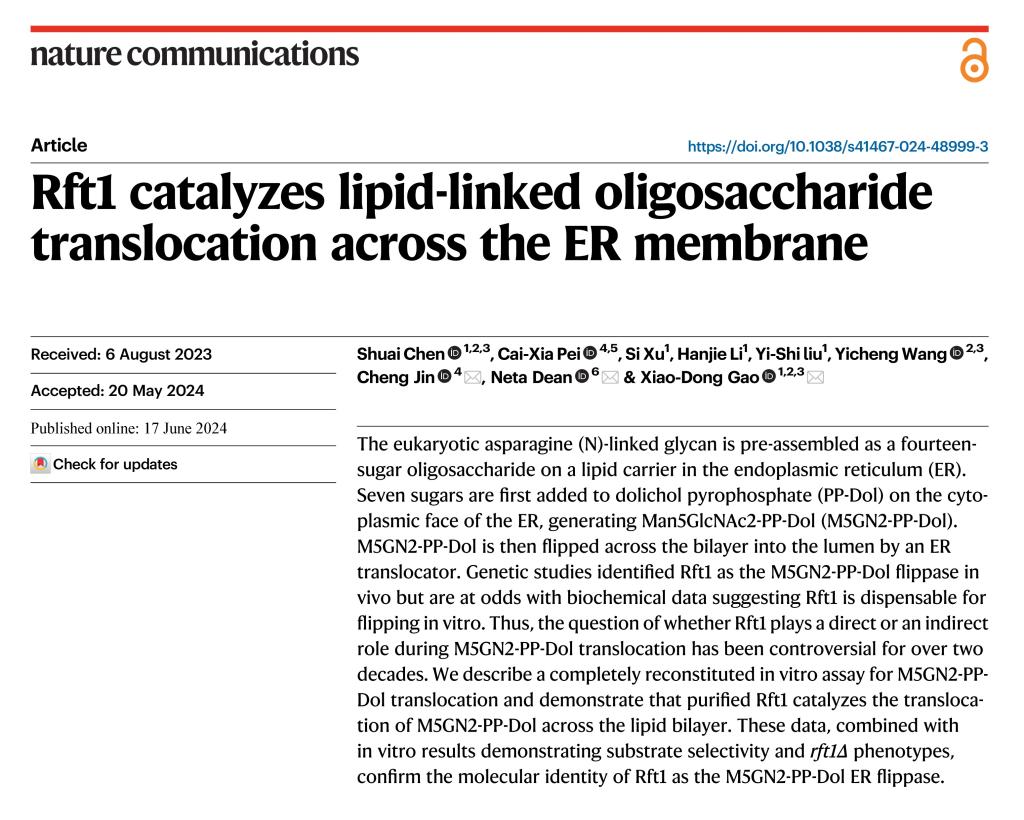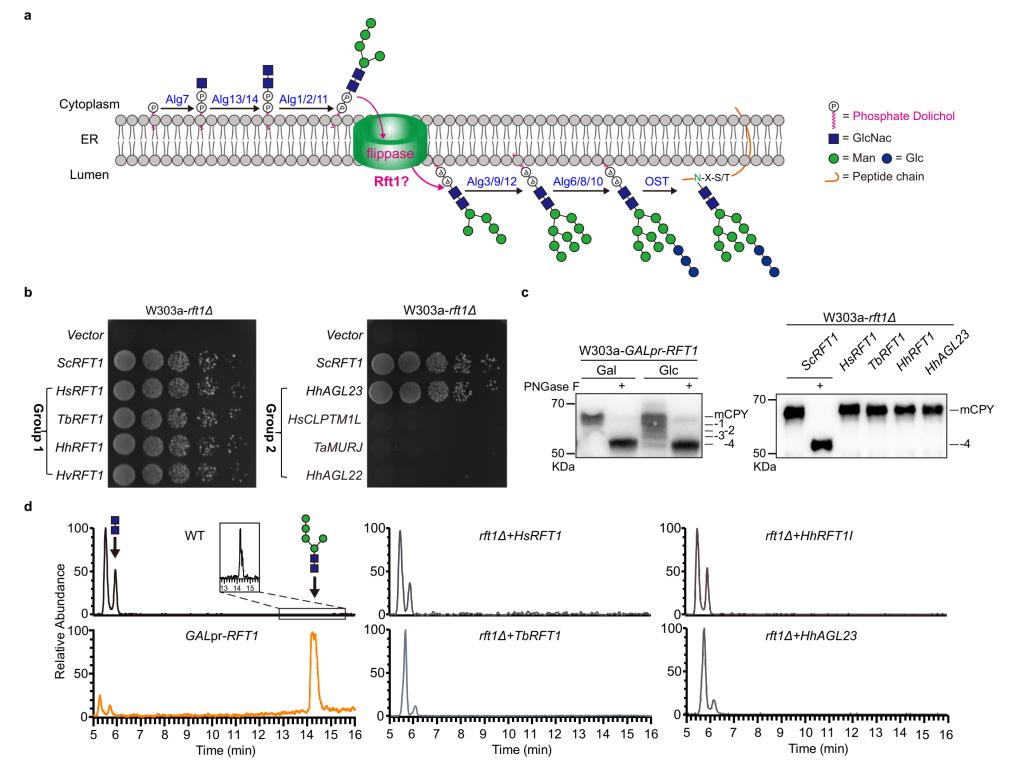Research Team Led by Xiao-dong Gao Achieves Breakthrough in Eukaryotic N-Glycosylation Study
Author:CS Time:2024-06-28 Click Times:

Recently, in Professor Hideki Nakanishi team, the research group led by Professor Xiao-dong Gao has made significant progress in the fundamental study of N-glycosylation modifications in eukaryotic cells. Their findings, titled "Rft1 catalyzes lipid-linked oligosaccharide translocation across the ER membrane," have been published online in Nature Communications (https://doi.org/10.1038/s41467-024-48999-3).
N-linked glycosylation is one of the most crucial post-translational modifications in eukaryotic proteins, with approximately 90% of glycoproteins undergoing this modification. The N-glycosylation process begins with the assembly of a dolichol-linked oligosaccharide (DLO) precursor on the endoplasmic reticulum (ER) membrane. Initially, two N-acetylglucosamine (GN) and five mannose (M) residues are sequentially added to dolichol phosphate (Dol-P) on the cytosolic side of the ER membrane by a series of specific glycosyltransferases (Algs), forming M5GN2-PP-Dol. This intermediate is then flipped across the ER membrane into the lumen, a process that is rapid, ATP-independent, protease-sensitive, and highly substrate-specific. This translocation is thermodynamically unfavorable, as the polar glycan head must traverse the hydrophobic interior of the lipid bilayer. Two decades ago, Helenius and Aebi suggested that Rft1 might be involved in this process. However, the identity of the Rft1 flippase has remained controversial within the glycoscience community. The authors identified that the archaeal HhAgl23 could rescue the lethality and N-glycosylation defects in rft1Δ cells through high-copy suppressor screening. Furthermore, they developed an in vitro assay for lipid-linked oligosaccharide (LLO) flippase activity and confirmed the M5GN2-PP-Dol flipping activity in proteoliposomes reconstituted with purified Rft1 or HhAgl23 proteins, ultimately establishing the role of Rft1 in flipping M5GN2-PP-Dol.

Professors Xiao-dong Gao, Cheng Jin from the State Key Laboratory of Mycology at the Institute of Microbiology, and Neta Dean from the United States are the corresponding authors of this paper. Shuai Chen, a doctoral student from our lab, is the first author. This work was supported by the National Natural Science Foundation of China (Grants 31971216, 32271342), the National First-class Discipline Program of Light Industry Technology and Engineering (Grant LITE2018-015), and the Shandong Province Major Science and Technology Innovation Project (Grant 2019JZZY011006).

